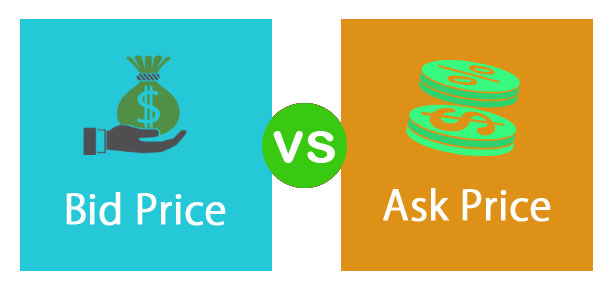Bid and Ask Price Explained

Story Highlights
- Forex trades involve bid and ask prices, like a negotiation between buyers and sellers of currencies.
- The difference between these prices called the spread, is the broker’s invisible fee.
- Understanding bid, ask, and spread helps you choose a broker and make informed forex trades.
The foreign exchange market, or forex for short, is a bustling marketplace where currencies are constantly exchanged. Unlike a store with fixed price tags, forex transactions involve a fascinating negotiation process centered around two key figures: the bid and the asking price. Mastering these prices is a fundamental skill for any aspiring forex trader.
The Art of the Deal: Bidders vs. Askers
Imagine a vibrant marketplace teeming with currency traders. On one side stand the buyers, or bidders, announcing the highest price they’re willing to pay for a particular currency pair, like USD/JPY (US Dollars vs. Japanese Yen). On the other side, sellers, or askers, declare the lowest price they’d accept for selling that same pair. The bid price reflects the maximum a buyer is willing to spend, while the ask price represents the minimum a seller is willing to receive. This interplay between bids and asks establishes the true market value of a currency pair at any given moment.
A Practical Example: Josh and the Yen Exchange

Let’s delve deeper into a real-world scenario. Josh, a forex enthusiast, desires to acquire 100,000 Japanese Yen (JPY) using US Dollars (USD). He chooses a broker with favorable trading conditions. Intuitively, one might expect the buying and selling price for USD/JPY to be identical. However, this is where the bid and ask prices come into play.
Josh discovers the asking price for USD/JPY to be 109.69. This translates to needing 911 USD to purchase 100,000 JPY. Now, if Josh decides to sell his yen later, he won’t receive the exact amount of USD back. The bid price, typically lower than the ask, might be 109.67. This means he’d receive around 99,909 JPY upon selling – a slight loss due to the spread, a concept we’ll explore shortly.
The Spread: The Silent Profit Maker
The gap between the bid and ask price is known as the spread. It acts as the invisible fee that brokers earn. While a small spread might seem inconsequential, frequent trades can cause these spreads to accumulate, impacting your overall profit. Here’s why understanding the spread is crucial:
Liquidity Matters: Low liquidity, characterized by fewer traders and orders, leads to wider spreads. To minimize the impact of spreads, aim to trade during peak hours (London and New York sessions) when markets are more active, and spreads tend to be tighter.
Who Wins in the Spread Game?
Brokers utilize spreads to generate revenue. There are two primary methods they employ:
Spread Markups: Some brokers add a markup to the existing market spread, essentially increasing your trading fees.
Commissions vs. Spread-Free Accounts: While some brokers charge commissions per trade, others offer spread-free accounts. However, these accounts might have hidden fees that could outweigh the benefit of no spreads.
Understanding how bid and ask prices function and their role in spreads empowers you to make informed decisions and potentially enhance your forex trading experience. By actively seeking out brokers with tight spreads and considering commission structures, you can optimize your trading strategy and navigate the forex market with greater confidence. Remember, in the dynamic world of forex, a solid foundation of knowledge is your most valuable asset.

